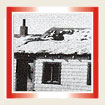|
Page
1 |
2 |
3 | 4 |
5 |
6
[<<Previous]
By this time, Ray Walters was
pushing to get the Redwater wildcat drilled and,
according to Imperial geologist Bill Hancock,
Walters took the initiative to work up the final
shooting in Jack Webb's absence, stating "If
Imperial doesn't want this, I'll take it." (A
similar statement had been attributed to Wes Rabey
much earlier.) Redwater No. 1 was located on Crown
Reservation #443 (1-32-57-21 W4M). The drilling
recommendation was signed by Webb on May 17,1948,
approved by Mike Haider on June 3rd, and the
wellsite surveyed by Jim Carpenter on June 11th with
Don Lougheed as rod-man.
One of the first pre-drilling
tasks for Bill Smith, Imperial's landman, was to
negotiate right of entry, including wellsite, with
Hilton Cook, surface owner of SE/32. Kitty (Libbey)
Wilkins, a long¬tine resident of Redwater, referred
to Smith as "...a company man. He wasn't out for
you, he was out for Imperial." As for Cook, "Gibby"
Gibson, District Petroleum Engineer, said he was one
of the best leaseholders Imperial had. Gibby found
him easy to deal with - Hilton was more concerned
with obtaining employment for his three sons, Jud,
Jack, and Maurice, than pushing for the highest
possible surface rentals. All three were hired! Jud
said he was the first to work for Imperial, and that
one day he was threshing and pitching bundles when
"Fin Lineham came out to the field and took the fork
away from me and offered me $1.20 an hour ... I had
no idea what the oil business was all about." Jud
Cook and his sister, Rita Astle, remember their
father visiting the wellsite daily to observe the
activity.
 Conditions
were primitive in those days. Moving the Wilson No.
l rig from Eyot Lake, an abandoned wildcat, had been
a horrendous task. Fin Lineham, toolpush, recalls
lending a hand along the way: "...I did go out and
help them re-timber the bridge where we crossed
Redwater Creek ... I brought two or three of the
guys ... so the damn drawworks wouldn't fall
through..." There were no mud tanks at the wellsite
in those days, simply a cellar and suction pits that
were filled in. These were considered to be quite
solid until one summer's day when Cook was driving a
tractor over his land and it sank, leaving only the
exhaust pipe showing. Conditions
were primitive in those days. Moving the Wilson No.
l rig from Eyot Lake, an abandoned wildcat, had been
a horrendous task. Fin Lineham, toolpush, recalls
lending a hand along the way: "...I did go out and
help them re-timber the bridge where we crossed
Redwater Creek ... I brought two or three of the
guys ... so the damn drawworks wouldn't fall
through..." There were no mud tanks at the wellsite
in those days, simply a cellar and suction pits that
were filled in. These were considered to be quite
solid until one summer's day when Cook was driving a
tractor over his land and it sank, leaving only the
exhaust pipe showing.
One has to admire the tenacity of
the field-workers, many of whom had seen a
succession of dry holes and were required to move
every two months or so. Rod Morris, the wellsite
geologist, had seen his share of abandonments in
both Saskatchewan and Alberta and had every reason
to believe that Redwater would be just another bust.
He hired the Lonsdale brothers and George Kiyooka,
among others, as sample
 catchers.
Morris moved into a draughty two-storey house in
Opal with his wife, Jean, and worked out of
Imperial's chicken coop office in Redwater, formerly
occupied by the Royer family's feathered tenants,
and rented from Emile Royer, local egg and poultry
operator: "...I think I'll rent the chicken house
for the Imperial people ... rather than I have
chickens in there. They need it bad..." catchers.
Morris moved into a draughty two-storey house in
Opal with his wife, Jean, and worked out of
Imperial's chicken coop office in Redwater, formerly
occupied by the Royer family's feathered tenants,
and rented from Emile Royer, local egg and poultry
operator: "...I think I'll rent the chicken house
for the Imperial people ... rather than I have
chickens in there. They need it bad..."
Fin Lineham had a portable shack
and was accompanied by his wife, Carrie, and their
children. One of the drillers, Alex Kenyon, and his
family moved in alongside.
Lineham recalls Mike Woodhead,
geologist, arriving from the UK and having to go to
the train station to pick up Mike's trunk, "It was
so heavy, I had to get the railway agent to help
me." (Mike collected model trains as a hobby.) Jean
Morris remembers Mike's Daimler, a rare vehicle even
in the big cities.
 Doug
Gamble, driller, said Wilbur Anderson was sent ahead
to lease enough land to set up camp, including
single-men bunkhouses, wash house, tool-push office,
and married-men shacks. Anderson was shown acreage
at the northeast corner of Redwater, which he could
have bought for $50, but laughed at it. "What in the
hell would I want with this patch of quack grass?"
Not long after, the patch was divided into ten lots,
at $450 per lot. Again, Wilbur laughed, "Missed the
boat." Doug
Gamble, driller, said Wilbur Anderson was sent ahead
to lease enough land to set up camp, including
single-men bunkhouses, wash house, tool-push office,
and married-men shacks. Anderson was shown acreage
at the northeast corner of Redwater, which he could
have bought for $50, but laughed at it. "What in the
hell would I want with this patch of quack grass?"
Not long after, the patch was divided into ten lots,
at $450 per lot. Again, Wilbur laughed, "Missed the
boat."
[Next>>] |
 Heritage Community Foundation Presents
Heritage Community Foundation Presents


 Heritage Community Foundation Presents
Heritage Community Foundation Presents